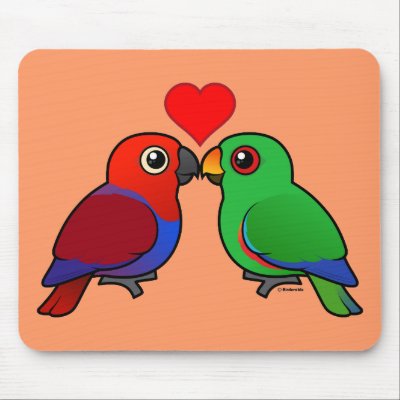Extreme Sexual Dimorphism in Eclectus Parrots

At first glance you may think that there are two different species of parrot in the above picture, but these are actually two Eclectus Parrots, with a male on the left and female on the right. The technical term for this is "sexual dimorphism", which in birds is often manifested in size or plumage differences. In birds of prey the female is usually bigger, and in ducks the male often has a much more colorful and complicated plumage than the female. With most birds in the parrot family the sexes are similar, but not in the case of the Eclectus Parrot. Males have a bright emerald green plumage and females are mostly bright red with some purple/blue plumage. Even the bill color is different.
The Eclectus Parrot is the most sexually dimorphic of all parrot species. The difference is so pronounced that the first European ornithologists to see Eclectus Parrots in the wild on their visits to South-East Asia and Australia mistakenly thought that they were two distinct species. In fact, males were first described in 1776 and females not until 61 years later. It wasn't until the early 20th century that they were finally considered one species.










Comments
Leave a comment
Thank you!